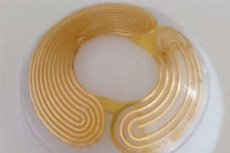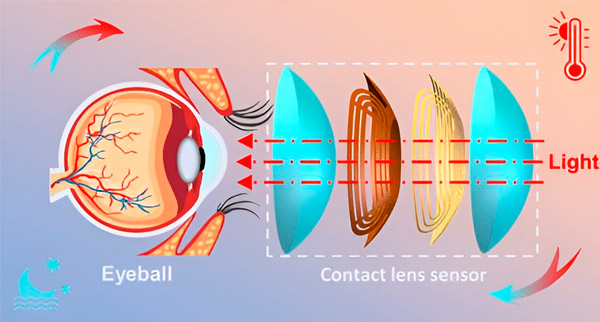New publications
Smart lenses can detect glaucoma wirelessly
Last reviewed: 02.07.2025

All iLive content is medically reviewed or fact checked to ensure as much factual accuracy as possible.
We have strict sourcing guidelines and only link to reputable media sites, academic research institutions and, whenever possible, medically peer reviewed studies. Note that the numbers in parentheses ([1], [2], etc.) are clickable links to these studies.
If you feel that any of our content is inaccurate, out-of-date, or otherwise questionable, please select it and press Ctrl + Enter.

Most people with early-stage glaucoma are unaware they have the disease, although early treatment is critical to reducing vision loss. Detecting a slight increase in eye pressure helps doctors diagnose glaucoma, but monitoring that pressure on a regular basis is difficult, especially given the wide range of temperatures the eye is exposed to. Now, researchers at ACS Applied Materials & Interfaces report a prototype of a “smart” contact lens that accurately measures eye pressure regardless of temperature.
According to the Centers for Disease Control and Prevention (CDC), about 80 million people worldwide have glaucoma, a group of diseases that damage the optic nerve and lead to vision loss. Doctors use a "pneumotonometer test" during an eye exam to measure the pressure inside the eye once. A slight increase in pressure, a barely noticeable symptom caused by fluid accumulation around the cornea, can lead to a diagnosis of glaucoma.
Researchers are testing ways to continuously and more comfortably detect these small pressure fluctuations, such as contact lenses that transmit signals to special glasses. However, temperature changes, such as going out into the cold, can distort the lenses’ measurements. So researcher Dengbao Xiao and his colleagues set out to develop a contact lens that accurately measures and wirelessly transmits real-time intraocular pressure data across a wide range of temperatures.

Xiao's team initially developed two miniature spiral circuits, each with a unique natural vibration pattern that changed when stretched, such as with changes in pressure and eye diameter. To create pressure-sensing contact lenses, the researchers sandwiched these tiny circuits between layers of polydimethylsiloxane, a standard contact lens material.
They then read the vibration patterns of the embedded circuits using a coil connected to a computer and positioned next to the lens. The transmitted signals were unaffected by tests that simulated eye movement, prolonged exposure to moisture (to simulate wet conditions in the eye), and daily wear.
In lab tests, the researchers placed the new lenses on three pig eye samples, monitoring intraocular pressure and temperature. The lenses monitored and wirelessly transmitted pressure data at temperatures ranging from 10 to 50 degrees Celsius. When pressure was calculated using only one circuit in the lens, the results were off by up to 87 percent. However, when using information from both circuits, the pressure readings were off by only 7 percent, as the combination of circuits eliminated temperature-related errors.
The researchers say their dual-chip smart lens design has the potential to accurately detect and monitor glaucoma early, even over a wide range of temperatures.
